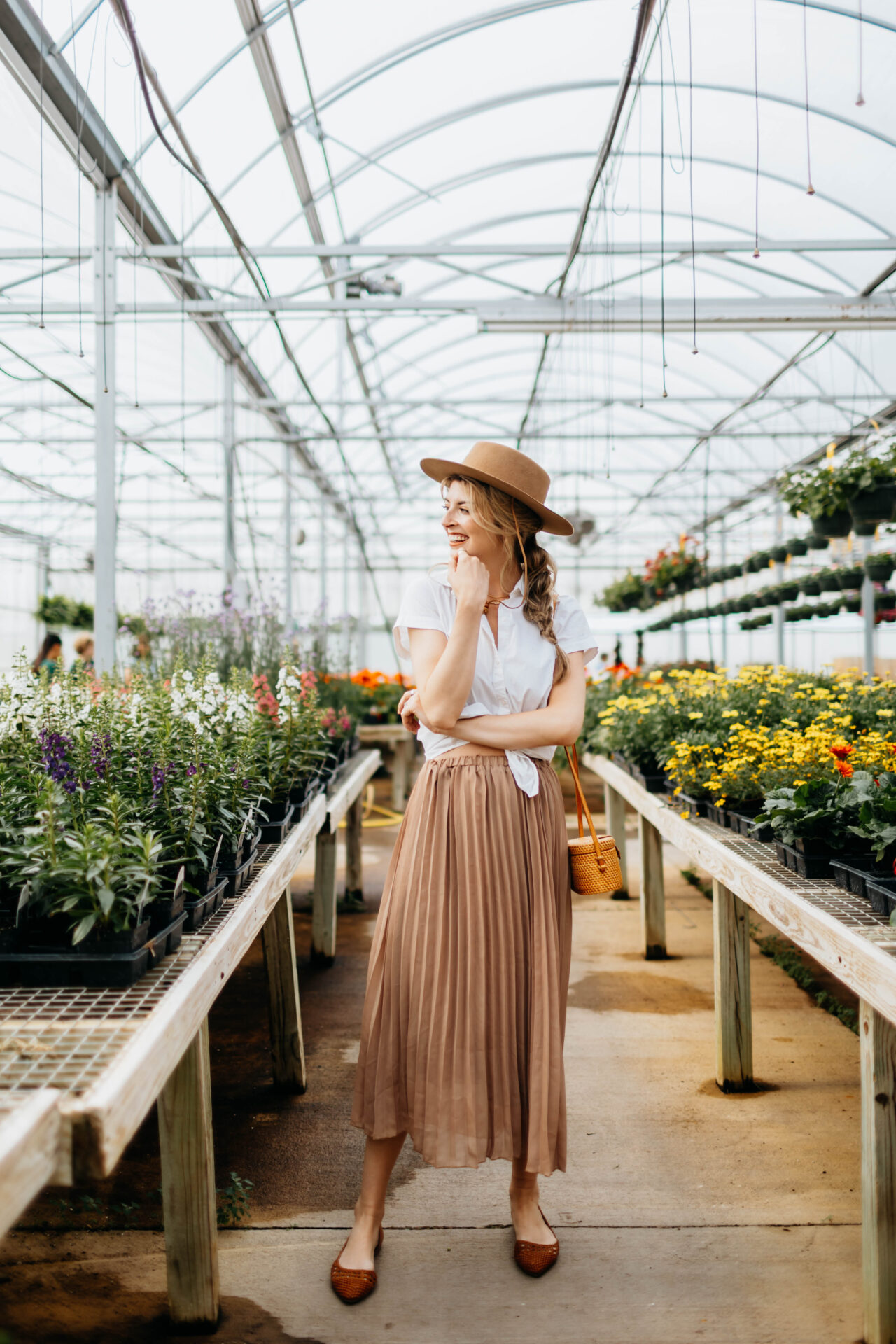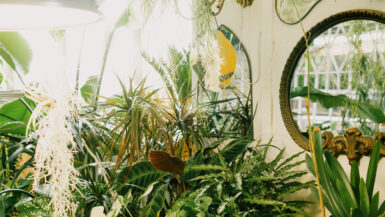Indoor vertical gardening has gained immense popularity among urban dwellers and gardening enthusiasts. As space becomes a luxury in modern homes, vertical gardens present an innovative and sustainable solution to satisfy the craving for greenery.
In this article, we will discuss the steps and considerations involved in building your very own DIY Indoor Vertical Garden Wall. We will also discuss the various types of vertical garden systems, the selection of suitable plants, and the essential care needed to maintain a thriving indoor garden ecosystem.
As you embark on this rewarding journey, you will create a visually appealing living space and contribute to a healthier and more sustainable environment. So, let’s get started on building a beautiful and flourishing indoor vertical garden wall.
Selecting the Best Plants for Vertical Gardening Indoors
Creating a thriving indoor vertical garden requires careful consideration when selecting the appropriate plants. The right choice of plants enhances the visual appeal of your living space and contributes to a healthier indoor environment. This section will discuss the factors to consider when choosing plants for your vertical garden and some popular plant options that are well-suited for indoor vertical gardening.
The Importance of Choosing the Right Plant Species
Selecting the best plants for your indoor vertical garden is crucial for success. Different plant species have unique lighting, watering, and maintenance requirements. Furthermore, some plants are better suited to vertical growth than others. When choosing plants, it is essential to consider the light, humidity, and temperature conditions in your space. Additionally, you should be aware of the impact of indoor vertical gardening on indoor air quality when selecting plants that help purify the air and remove toxins.
Low-Maintenance Plant Options for Indoor Vertical Gardening
When choosing plants for your indoor vertical garden, it is advisable to select low-maintenance species that can thrive in your home’s specific conditions. The following plants are known for their adaptability, hardiness, and low maintenance:
1. Pothos (Epipremnum aureum): This hardy vine is an excellent choice for indoor vertical gardens due to its rapid growth and minimal care requirements. Pothos can tolerate low light conditions and require infrequent watering.
2. Snake Plant (Sansevieria trifasciata): This popular indoor plant is known for its air-purifying properties and striking appearance. Snake plants are highly adaptable, requiring minimal water and sunlight.
3. Boston Fern (Nephrolepis exaltata): Boston ferns add a lush, tropical feel to your vertical garden. They thrive in humid conditions and moderate light, making them well-suited for indoor environments.
4. Spider Plant (Chlorophytum comosum): This attractive, cascading plant is easy to care for and performs well in various lighting conditions. Spider plants are also known for their air-purifying qualities.
Considering Plant Compatibility for a Cohesive Vertical Garden
Consider plant compatibility to create a visually appealing and harmonious indoor vertical garden. Select plants with similar light, water, and humidity requirements to ensure all species flourish together. Consider each plant’s mature size and growth patterns to create a balanced and aesthetically pleasing arrangement.
In summary, selecting the best plants for your indoor vertical garden involves considering their needs, compatibility, and contribution to a healthier indoor environment. By choosing the right plant species carefully, your vertical garden will be visually stunning and a thriving and sustainable addition to your living space.
DIY Vertical Garden Wall Materials and Tools
Embarking on a DIY indoor vertical garden wall project is an exciting way to add greenery and life to your home. Gathering the necessary materials and tools before you begin is essential to ensure a smooth and successful project. This section will outline the materials and tools required to build a DIY indoor vertical garden wall and provide helpful tips on selecting the right components.
The Foundation: Selecting the Right Wall Structure and Support
The backbone of your indoor vertical garden wall is the wall structure and support system. Several options are available, such as wood, metal, or plastic. When choosing the material for your vertical garden wall, consider the weight of the plants and the required durability. Also, ensure the wall structure is anchored to avoid accidents or damage.
Some popular support systems include:
1. Wooden pallets: Reclaimed wooden pallets are cost-effective and sustainable for a vertical garden wall structure. They can be painted or stained to match your interior design and provide a rustic, natural look.
2. Metal grids: Metal grids, such as wire mesh or metal trellises, offer a durable and lightweight option for your vertical garden wall. They provide excellent support for climbing plants and can be easily customized to fit your space.
3. Modular systems: Commercially available modular systems, such as vertical garden planters or fabric pockets, provide a streamlined and modern appearance. These systems often include built-in irrigation and drainage features, making them a convenient option for busy homeowners.
Essential Tools for Building Your DIY Indoor Vertical Garden Wall
The right tools will make your DIY indoor vertical garden wall project significantly more manageable and efficient. Here are some essential tools you will need for building and maintaining your vertical garden:
1. Drill and drill bits: A power drill is necessary for anchoring your wall structure securely. Choose the appropriate drill bits based on the material of your wall and the support system.
2. Level: A level ensures that your vertical garden wall is straight and well-aligned, which is crucial for proper irrigation and drainage.
3. Measuring tape: Accurate measurements are essential for determining the size and layout of your vertical garden wall and for spacing the plants correctly.
4. Gardening gloves: Sturdy gardening gloves protect your hands while handling plants, soil, and tools.
5. Pruners or scissors: Regular pruning and trimming are necessary to maintain the health and appearance of your indoor vertical garden. Invest in a good pair of pruners or scissors designed for gardening purposes.
6. Watering can or hose: Depending on the size and location of your vertical garden wall, a watering can or hose with a gentle spray nozzle is necessary for proper irrigation.
7. Trowel and soil scoop: These tools help plant and transplant your chosen plants into the vertical garden wall.
With the right materials, tools, and planning, you can successfully create a stunning and thriving DIY indoor vertical garden wall. By selecting the appropriate support structure and gathering essential tools, you will be well-prepared to embark on this rewarding project, transforming your living space into a lush, green oasis.
Step-by-Step Guide to Building Your Indoor Vertical Garden Wall
Creating an indoor vertical garden wall is an exciting and creative project to breathe new life into your living space. This step-by-step guide will walk you through constructing a thriving and stunning indoor vertical garden wall. We will cover key aspects such as planning, selecting the right materials, planting, and maintaining your vertical garden to ensure its long-term health and appeal.
Step 1: Planning and Designing Your Indoor Vertical Garden Wall
Planning and designing the layout is essential before constructing your vertical garden. Consider factors such as available space, lighting conditions, and your personal preferences. Sketch out a rough design, considering the size and growth patterns of the plants you selected. This will help you determine your vertical garden wall’s required dimensions and structure.
Step 2: Preparing the Wall and Assembling the Support System
Once you have a solid plan, the next step is to prepare the wall and assemble the support system. Start by clearing the wall area and ensuring it is clean and free of any obstructions. Depending on your chosen support system, follow the manufacturer’s instructions or your DIY plan to securely anchor the structure to the wall. Ensure the support system is level and can handle the weight of the plants and containers.
Step 3: Selecting and Preparing the Containers
Containers play a crucial role in the success of your indoor vertical garden. Choose containers suitable for the size and growth habits of your chosen plants. Ensure the containers have proper drainage to prevent root rot and maintain healthy plants. Following the manufacturer’s installation guidelines if you’re using a modular system.
Step 4: Planting Your Indoor Vertical Garden Wall
With your support system and containers in place, it’s time to plant your indoor vertical garden. Fill the containers with high-quality potting soil, leaving enough room for the plants’ roots. Gently remove the plants from their nursery pots, loosen the root balls slightly, and place them in their new containers. Firmly press the soil around the roots, ensuring the plants are securely anchored in their new home.
Step 5: Installing an Irrigation System
Proper watering is crucial for the health and success of your indoor vertical garden wall. Depending on the size and complexity of your garden, you may choose to install a drip irrigation system or water your plants manually. A drip irrigation system ensures that your plants receive consistent moisture, while manual watering allows for more control over the amount of water each plant gets. Whichever method you choose, water your plants according to their individual needs.
Step 6: Providing Adequate Lighting
Lighting is another essential factor in the health of your indoor vertical garden. Ensure your plants receive the appropriate light based on their specific requirements. If your garden is located in an area with insufficient natural light, consider supplementing with artificial grow lights to promote healthy growth and development.
Step 7: Maintaining Your Indoor Vertical Garden Wall
Regular maintenance is the key to a thriving indoor vertical garden wall. Monitor your plants’ health, prune any dead or yellowing leaves, and rotate the containers if needed to ensure even light exposure. Also, look for pests and diseases and address any issues promptly to prevent them from spreading throughout your garden.
With careful planning, construction, and maintenance, your indoor vertical garden wall will be a stunning and sustainable addition to your living space. Following this step-by-step guide, you can transform a blank wall into a lush, green oasis that enhances your home’s aesthetics and air quality.
Choosing the Right Location for Your Indoor Vertical Garden Wall
Selecting the perfect location for your indoor vertical garden wall ensures its success and longevity. A well-chosen location provides the necessary environmental factors for your plants to thrive while enhancing your living space’s aesthetics. This section will discuss the key factors to consider when choosing the right location for your indoor vertical garden wall, ensuring that your garden flourishes for years.
Lighting Conditions: Finding the Perfect Balance
One of the most critical factors to consider when choosing a location for your indoor vertical garden wall is the availability of natural light. Different plants have varying light requirements, and providing the right light is essential for their growth and overall health. When selecting a location, consider the direction of the sunlight and the duration of light exposure throughout the day.
North-facing walls typically receive less direct sunlight, making them suitable for shade-loving plants. Conversely, south-facing walls receive more sunlight, ideal for sun-loving plants. East- and west-facing walls provide intermediate light levels appropriate for plants with moderate light requirements. If natural light is insufficient, consider supplementing with artificial grow lights to provide the necessary light intensity for your plants.
Temperature and Humidity: Creating a Comfortable Environment
Your chosen location’s temperature and humidity levels are essential for your indoor vertical garden wall. Different plants have unique temperature and humidity preferences, so choosing an area that provides a suitable environment for your selected plants is crucial. Avoid placing your vertical garden near sources of extreme temperature fluctuations, such as heating vents or air conditioning units, as this can stress the plants and hinder their growth.
Most indoor plants prefer a consistent temperature of 60-75°F (15-24°C) and moderate humidity. If your space is too dry, consider adding a humidifier or placing a tray of water near the garden to increase humidity. Conversely, if the area is too humid, use a dehumidifier or fan to regulate moisture levels and prevent mold growth.
Accessibility and Maintenance: Ensuring Easy Care
When choosing a location for your indoor vertical garden wall, consider the ease of access for regular maintenance tasks, such as watering, pruning, and pest control. Select a location that allows you to comfortably reach all plants and containers, ensuring each plant receives the necessary care and attention. Additionally, the proximity to a water source should be considered to facilitate easy watering and irrigation.
Visual Impact: Enhancing Your Living Space
Lastly, consider the visual impact of your indoor vertical garden wall on your overall interior design. A well-placed vertical garden can serve as a stunning focal point, enhancing the aesthetics of your living space. Choose a location that complements your existing décor and allows for easy viewing and enjoyment of your garden.
By considering lighting conditions, temperature and humidity levels, accessibility, and visual impact, you can choose the perfect location for your indoor vertical garden wall. This thoughtful consideration ensures that your garden thrives and is a beautiful, sustainable addition to your home.
Indoor Vertical Garden Wall Maintenance and Care
A thriving indoor vertical garden wall requires regular maintenance and care to ensure its long-term health and beauty. This subsection will discuss essential tasks and tips for maintaining and caring for your indoor vertical garden wall, ensuring it remains a stunning and sustainable addition to your living space.
Watering: Striking the Perfect Balance
Proper watering is vital for the health and success of your indoor vertical garden wall. Different plants have unique watering requirements, and providing each plant with the appropriate amount of moisture is essential. Monitor the soil moisture levels regularly and adjust your watering schedule accordingly. Overwatering can lead to root rot and other issues, while underwatering can cause plants to wilt and die. Consider installing a drip irrigation system for a consistent and efficient watering solution.
Pruning and Trimming: Encouraging Healthy Growth
Regular pruning and trimming are necessary to maintain the appearance and health of your indoor vertical garden. Remove any dead, yellowing, or damaged leaves and stems to encourage new growth and prevent the spread of disease. Pruning also helps maintain your plants’ desired shape and size, ensuring your vertical garden wall remains visually appealing and well-structured.
Rotating Plants: Ensuring Even Light Exposure
To maintain a balanced and healthy vertical garden, it is essential to ensure that all plants receive equal light exposure. Rotate your plant containers periodically to prevent plants from becoming leggy or stunted due to insufficient light. This practice maintains the overall aesthetic of your vertical garden wall and promotes even growth among all plants.
Pest and Disease Control: Keeping Your Garden Healthy
Regularly inspect your indoor vertical garden wall for signs of pests and diseases. Common indoor plant pests include aphids, spider mites, and mealybugs, while diseases can manifest as mold, mildew, or other fungal infections. Address any issues promptly with appropriate treatments, such as insecticidal soap or fungicides, to prevent the spread of pests and diseases throughout your garden.
Fertilizing: Providing Essential Nutrients
Proper nutrition is crucial for plant growth and overall health. Use a high-quality, slow-release fertilizer or organic compost to nourish your plants and ensure they receive the nutrients for optimal growth. Follow the recommended application rates and schedule based on your plant’s specific needs and the fertilizer you use.
Monitoring and Adjusting: Adapting to Your Garden’s Needs
As your indoor vertical garden wall matures, it is essential to continually monitor its health and adjust your maintenance practices as needed. Observe your plants’ growth patterns, overall appearance, and response to environmental factors such as light, temperature, and humidity. Adapt your care routine to accommodate changes, ensuring your home’s vertical garden remains a thriving and beautiful feature.
By dedicating time and attention to maintaining and caring for your indoor vertical garden wall, you can enjoy a lush, green oasis that enhances your living space’s aesthetics and air quality. Embrace the rewards of your hard work as your vertical garden flourishes, providing a stunning and sustainable addition to your home.







Leave a reply